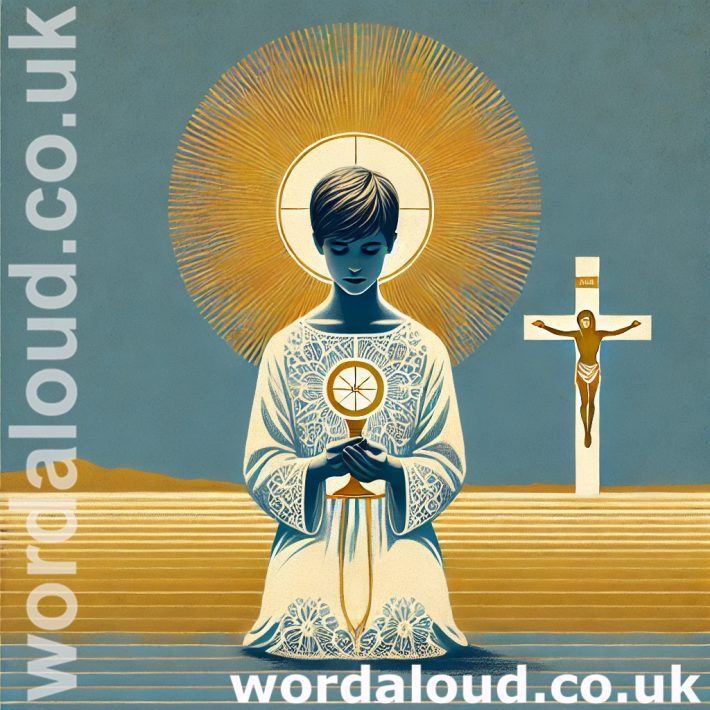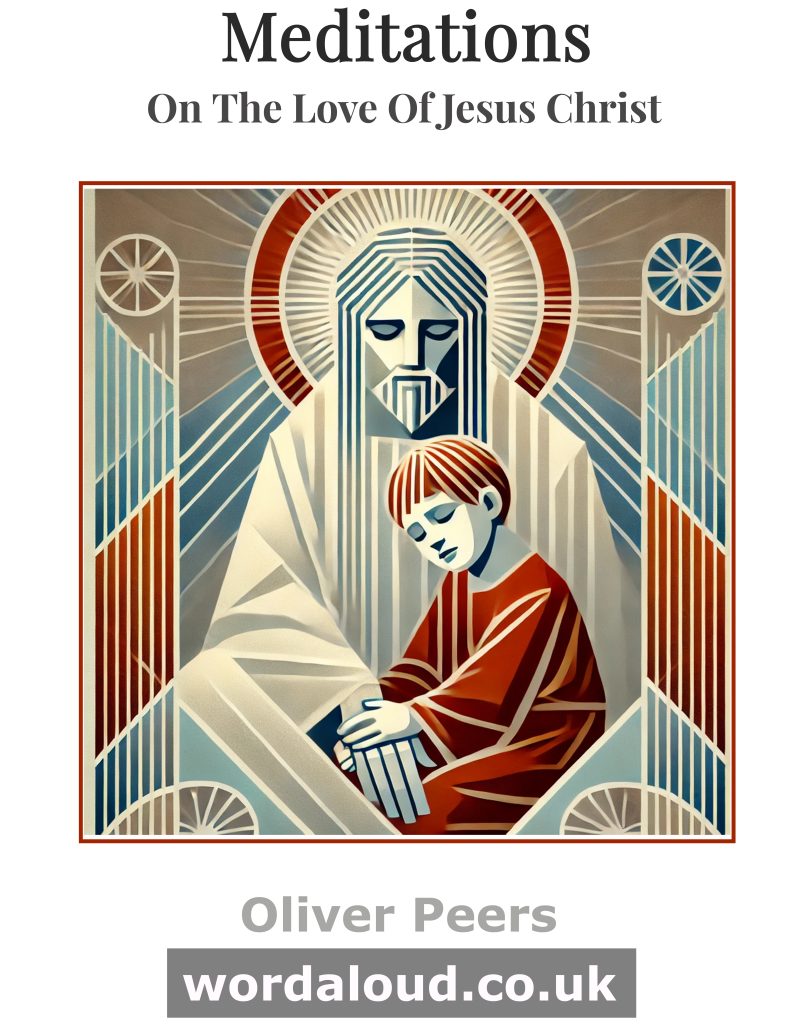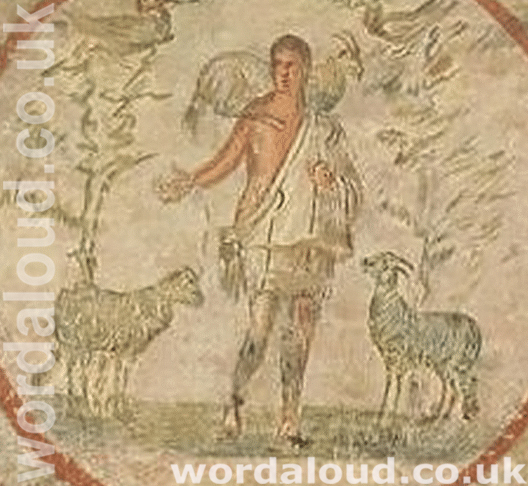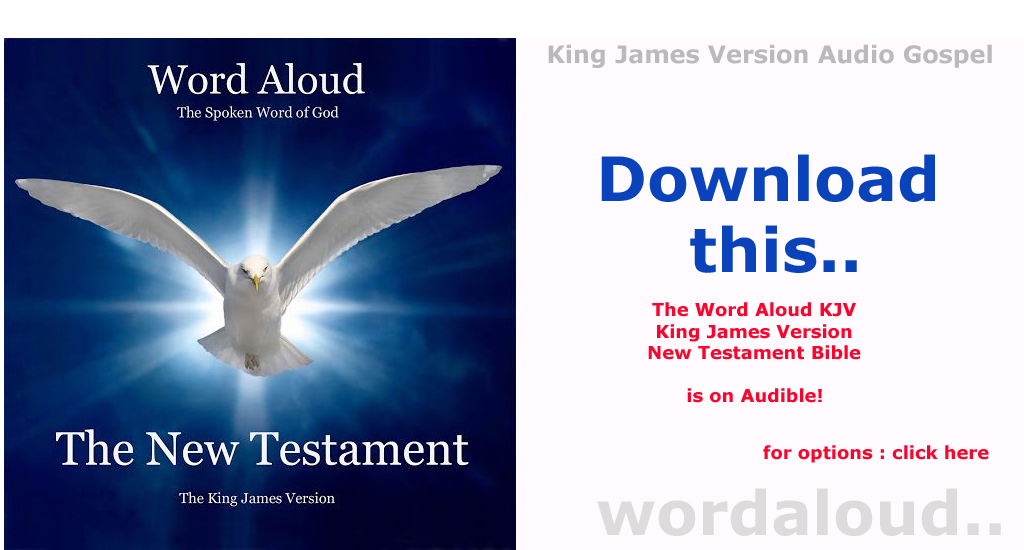Christian Art | A Boy At Prayer With Jesus In The Eucharist
Office Of Readings | Eastertide Week 3, Monday | A Reading From The Commentary Of Saint Bede The Venerable On The First Letter Of Saint Peter | A Chosen Race, A Royal Priesthood
‘A chosen race, a royal priesthood.’
‘A Chosen Race, A Royal Priesthood’ | Saint Bede The Venerable
Saint Bede the Venerable (c. 673–735), monk of Wearmouth-Jarrow and the most eminent Anglo-Saxon theologian, offers in this passage a profound meditation on 1 Peter 2:9, wherein the Apostle applies Old Testament imagery to the new People of God. Bede’s theological genius lies in his ability to interweave patristic exegesis, liturgical spirituality, and historical typology into a cohesive vision of the Christian life as pilgrimage from darkness to light, from Egypt to the Promised Land.
‘A Chosen Race’ | Election Through Faith In Christ
Bede begins by identifying Christians—specifically Gentile believers—as a chosen race, appropriating the title given to Israel in Exodus 19:6. In doing so, he recognizes the Church as the continuation and fulfillment of Israel, not by bloodline, but by faith in Christ, the true cornerstone.
‘Peter calls them a chosen race because of their faith…’
This move echoes the teachings of Paul (Romans 9–11), where the true children of Abraham are identified not by descent, but by belief. For Bede, faith becomes the distinguishing mark that separates the new Israel from the old. Those who reject Christ reject the living stone and are themselves ‘rejected’, a reference to Psalm 118:22—’The stone that the builders rejected has become the cornerstone.’
By aligning faith with election, Bede echoes the Augustinian and Pauline conviction that salvation is God’s initiative, extended now universally to Jews and Gentiles.
‘A Royal Priesthood’ | Participating In Christ’s Kingship And Priesthood
The term royal priesthood is rich with biblical resonance. It recalls Melchizedek (Genesis 14; Hebrews 7), the priest-king par excellence, and, ultimately, Christ himself who fulfills both roles. Bede deepens this by emphasizing that believers are united to Christ’s body, and thus share in his royal and priestly identity:
‘As sovereign he grants them his kingdom, and as high priest he washes away their sins…’
This theological insight links directly to Revelation 1:6—’He has made us to be a kingdom, priests to his God and Father.’ Bede understands the priesthood of all believers not as a rival to ministerial priesthood, but as a spiritual vocation rooted in holiness and self-offering. Christians are called to offer the ‘sacrifice of a blameless life’, which echoes Romans 12:1: ‘Offer your bodies as a living sacrifice, holy and pleasing to God.’
‘A Consecrated Nation, A People Claimed By God’
Bede continues his commentary by emphasizing that through the blood of Christ, Christians have become a ‘consecrated nation’ and ‘God’s own possession’. Here, he draws a parallel between the Church and Israel’s redemption from Egypt by the blood of the lamb (Exodus 12).
‘Through the blood of our Redeemer, we have become a people claimed by God as his own…’
This sacrificial language not only recalls the Paschal Lamb but also connects the Cross to the Exodus. Baptism, for Bede, is the new Red Sea: the sacramental moment when sins are drowned like Pharaoh’s army, and the people emerge free to serve God in holiness. His reliance on Hebrews 10:38 and Acts 20:28 further grounds this ecclesiology in apostolic teaching, emphasizing perseverance in faith and the costly redemption wrought by Christ’s blood.
Typology | Exodus As The Christian Journey
Bede, steeped in patristic tradition, reads the Exodus story as a figure (Greek: typos) of Christian redemption:
‘The Egyptians who oppressed the people of God… are an apt symbol of the sins that once oppressed us…’
This allegorical reading of Exodus finds deep roots in early Christian exegesis, particularly in Origen and Gregory of Nyssa. For Bede, the Church is the pilgrim Israel, journeying through the desert of earthly life toward the heavenly Canaan. The cloud by day and the pillar of fire by night become symbols of divine guidance—God’s grace leading the soul through moral darkness into truth.
This concept links powerfully to the liturgical context of Eastertide, a season in which the newly baptized, like the Israelites after the Red Sea, learn to live as God’s consecrated people, led by the Risen Christ.
Declaring God’s Wonderful Deeds | The Church’s Mission
Bede draws his reflection to a pastoral and doxological close:
‘They may declare his wonderful deeds…’
The purpose of election, priesthood, and redemption is not merely personal sanctification, but public proclamation. As Israel sang after crossing the Red Sea (Exodus 15), so now the Church sings of the Resurrection in the liturgy. The Church exists to declare, to witness—to live a Eucharistic life of thanksgiving and testimony.
Here, Bede alludes to both the apostolic kerygma (Acts 2:38-47) and the daily life of the Church, as it continues to celebrate the Paschal mystery and manifest God’s glory in word and deed.
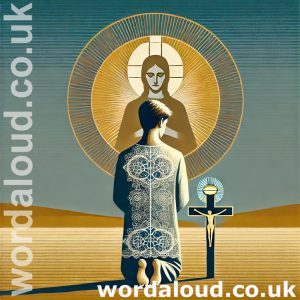
A Reading From The Commentary Of Saint Bede The Venerable On The First Letter Of Saint Peter | A Chosen Race, A Royal Priesthood
You are a chosen race, a royal priesthood. This praise was given long ago by Moses to the ancient people of God, and now the apostle Peter rightly gives it to the Gentiles, since they have come to believe in Christ who, as the cornerstone, has brought the nations together in the salvation that belonged to Israel.
Peter calls them a chosen race because of their faith, to distinguish them from those who by refusing to accept the living stone have themselves been rejected. They are a royal priesthood because they are united to the body of Christ, the supreme king and true priest. As sovereign he grants them his kingdom, and as high priest he washes away their sins by the offering of his blood. Peter says they are a royal priesthood; they must always remember to hope for an everlasting kingdom and to offer to God the sacrifice of a blameless life.
They are also called a consecrated nation, a people claimed by God as his own, in accordance with the apostle Paul’s explanation of the prophet’s teaching: My righteous man lives by faith; but if he draws back, I will take no pleasure in him. But we, he says, are not the sort of people who draw back and are lost; we are those who remain faithful until we are saved. In the Acts of the Apostles we read: The Holy Spirit has made you overseers, to care for the Church of God which he bought with his own blood. Thus, through the blood of our Redeemer, we have become a people claimed by God as his own, as in ancient times the people of Israel were ransomed from Egypt by the blood of a lamb.
In the next verse, Peter also makes a veiled allusion to the ancient story, and explains that this story is to be spiritually fulfilled by the new people of God, so that, he says, they may declare his wonderful deeds. Those who were freed by Moses from slavery in Egypt sang a song of triumph to the Lord after they had crossed the Red Sea and Pharaoh’s army had been overwhelmed; in the same way, now that our sins have been washed away in baptism, we too should express fitting gratitude for the gifts of heaven. The Egyptians who oppressed the people of God, and who can also stand for darkness or trials, are an apt symbol of the sins that once oppressed us but have now been destroyed in baptism.
The deliverance of the children of Israel and their journey to the long-promised land correspond with the mystery of our redemption: we are making our way towards the light of our heavenly home with the grace of Christ leading us and showing us the way. The light of his grace was also symbolised by the cloud and the pillar of fire, which protected the Israelites from darkness throughout their journey, and brought them by a wonderful path to their promised homeland.
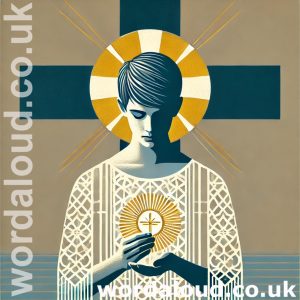
Saint Bede The Venerable (C. 673–735)
Saint Bede, commonly known as the Venerable Bede, was an English Benedictine monk, theologian, and historian whose scholarly influence has endured across centuries. Born around 673 AD in Northumbria (modern-day northeast England), Bede entered the twin monasteries of Wearmouth and Jarrow as a child and spent his entire life there in study, teaching, and prayer.
Renowned for his deep learning and holiness, Bede mastered Scripture, theology, history, grammar, poetry, and the sciences. His most famous work, The Ecclesiastical History of the English People, earned him the title ‘Father of English History’. However, he also wrote extensive biblical commentaries, including on the Pentateuch, the Gospels, and several epistles, often synthesizing the insights of the Church Fathers for his monastic audience.
Bede died in 735 AD and was soon venerated as a saint. He was declared a Doctor of the Church in 1899 by Pope Leo XIII—the only native of Great Britain to receive that title. His feast day is celebrated on May 25. Bede’s legacy is that of a man who united deep faith with intellectual brilliance, serving as a bridge between the patristic age and medieval Christianity.

